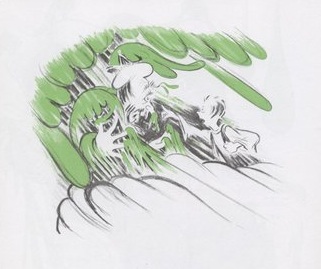Two more events added to the dozen with $1 billion-plus in damages

From droughts and wildfires to tornadoes and hurricanes – and let’s not forget flooding, hail and that Halloween snowstorm — last year will go down as one of the most extreme weather years on record.
This week the National Oceanic and Atmospheric Administration (NOAA) released the final tally for 2011.
The two latest disasters to make the grim list are September’s Tropical Storm Lee which swept up the East Coast to cause record flooding and 21 deaths, and July’s severe weather that brought high winds, hail, and flooding to the Rocky Mountains and the Midwest, and took two lives.
Across the planet it was the 15th consecutive year of above-average temperatures. Here in the U.S., the portion of the nation in extreme drought or very wet conditions was the highest ever: 58%, and that’s nearly three times normal. No surprise that temperatures in Texas made for the second warmest year on record, with the drought there surpassing the severity of ones in the 1930s and 1960s. Seven states across the Midwest and Northeast had their wettest years ever.
[module align=”left” width=”half” type=”pull-quote”]”There are more people and more infrastructure in harm’s way.”[/module]
Even effects from the El Nino Southern Oscilliation (ENSO) — and it’s current, opposite La Nina phase — are changing, according to NOAA; both El Nino and La Nina years are tending to be warmer. The 2011 global surface temps during this La Nina were, “as warm as anything we’ve seen in the past,” said Thomas Karl, director of the agency’s subcommittee on Global Change Research.
The global La Nina/El Nino graph shows a steep rise in temps since 1990 and last year, the phenomenon was responsible for the warmest summers recorded in Norway and Spain, the second warmest for the UK. “The extreme conditions witnessed in 2011 are consistent with trends driven by global warming,” Karl said. Of course, no single year’s data necessarily links to long-term climate changes, but scientists say last year’s weather roller coaster is consistent with what they expect from global climate change.
Over the next three months, NOAA expects temps in California to be close to normal, slightly cooler north of the Golden Gate, and precipitation will be slightly below normal south of San Francisco. Still sunny in here in L.A. Send (some) rain. Not too much.
You can find all the hard numbers and graphs on the NOAA website.
6 thoughts on “It’s Official: 2011 a Record-Breaking Year for Climate Extremes”
Comments are closed.

That’s fantastic. This is real evidence that the climate changes, but of course we all know about that. We also know that disasters, high temperatures, low temperatures, droughts and storms are not evidence that CO2 is the cause. You simply imply it. And that’s the hidden trick in your blog post.
Over time this kind of trickery does tremendous damage to the environmental movment.
cheers
I feel I must intercede here on the writer’s behalf, to point out that nowhere in this post is there the slightest mention of CO2, or even anthropogenic global warming. We’re simply reporting observed v. anticipated changes.
Question for readers of this post that go to the NOAA Press Release: What are Climate Disasters?
It has been pointed out at Watts Up With That the terms is undefined:
It isn’t even in NOAA’s own glossary of meteorological terms, seen here: http://www.erh.noaa.gov/er/box/glossary.htm or in the main glossary here: http://weather.gov/glossary/index.php?letter=c
The AMS glossary doesn’t define it either: http://amsglossary.allenpress.com/glossary/search?p=1&query=%22climate+disaster%22&submit=Search
Nor the Weather Channel: http://www.weather.com/glossary/c.html
Why, even the National Climatic Data Center, author of this press release, doesn’t have it:
http://www.ncdc.noaa.gov/paleo/ctl/glossary.html
So what is a “climate disaster”? Something apparently just made up on the spot to sound scary to apply to the “weather is not climate unless we say it is” meme.
It’s a fair question. We refer to these in our reporting as “extreme weather events.” I’m hardly the last word on this but I would consider a “climate disaster” to be something with longer duration and larger spatial impact, such as the 1930s dustbowl or the conditions that are believed to have emptied out places like Mesa Verde and Bandolier (well considered in Bill deBuys’ new book, _A Great Aridness_).
On-going comment (broken record) about the use of aerosol sprays — geoengineering, weather modification, solar radiation managment or chem trails — noone seems to be asking what this massive spraying is doing to weather patterns – and why, and by whom. See doc, What in the World Are They Spraying? See http://www.geoengineeringwatch,org and http://www.californiaskywatch.com — plus thousands of photos on YouTube/chem trails….Investigative Journalism???? What has happened to it.
For the benefit of other readers, NOAA defines contrails as, “the condensation trail that is left behind by a passing jet plane,” and goes on to explain that, “Contrails form when hot humid air from jet exhaust mixes with environmental air of low vapor pressure and low temperature.”
http://www.wrh.noaa.gov/fgz/science/contrail.php?wfo=fgz
It’s been established that contrails have an impact on atmospheric conditions as they re-form into high-level clouds. But the notion of “spraying” any substance as part of some geoengineering agenda has been thoroughly debunked.